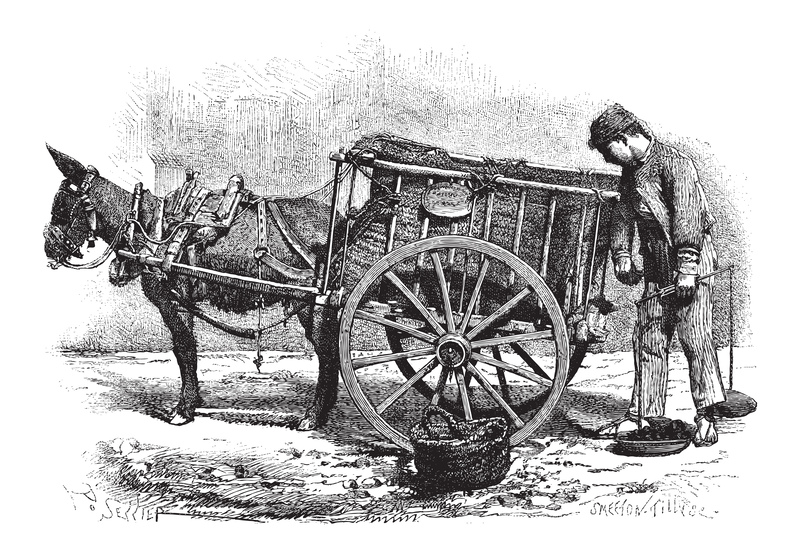Adapting to Waste Challenges: Strategies Through the Ages
Waste management has been an integral aspect of human civilization's development. From the earliest settlements to today's sprawling metropolises, adapting to waste challenges has required ingenuity, cooperation, and an evolving array of strategies. Join us as we trace the history of waste, examine key adaptation strategies from ancient times to the present, and explore what the future holds for responsible waste management.
The Origins of Waste: Early Human Settlements
In the early days of human society, the production of waste was minimal and organic. Our ancestors, primarily hunter-gatherers, left behind biodegradable matter such as bones, shells, and plant remains. The waste management challenges they faced were minor, since nature's processes took care of decomposition. However, as humans transitioned to settled communities, waste began accumulating in larger quantities, setting the stage for the necessity of organized approaches.
The First Waste Piles and Dumping Grounds
- Middens - Archaeological excavations reveal piles of shells and bones near ancient settlements, signifying early disposal sites.
- Communal Waste Areas - Early villages often designated spaces outside village perimeters for dumping unwanted materials.
- Burning and Burying - Methods like burning refuse and burying waste in pits were primitive but effective in small communities.
Although these strategies sufficed for smaller populations, as civilizations grew, so did the complexity and volume of waste management issues. The need to adapt to new waste challenges became increasingly apparent.

Ancient Civilizations and Waste Solutions
The advancement of urban centers in Mesopotamia, Egypt, Greece, and Rome required more systematic responses to mounting waste problems. These ancient societies laid down the first bricks of what would eventually become modern solid waste management.
Mesopotamian and Egyptian Efforts
In ancient Mesopotamia, cities like Babylon contended with refuse clogging streets and waterways. Authorities imposed penalties for littering and relied upon labor to periodically remove debris. Similarly, Egyptian communities designated landfill areas outside city walls and used slaves or laborers for waste disposal.
Sanitation in Ancient Greece and Rome
- Greece - Introduced laws requiring waste to be disposed at least a mile from city limits; hired 'scavengers' to transport refuse.
- Rome - Developed some of the earliest sewer systems, such as the Cloaca Maxima, diverting human waste away from populated areas.
- Public baths and latrines underscored the Roman effort to maintain public hygiene and mitigate waste-born diseases.
All these measures reflected an evolving understanding that adapting to changing waste challenges is essential for public health and urban sustainability.
Medieval and Renaissance Waste Management
With the collapse of the Roman Empire, much of the sophisticated infrastructural knowledge was lost. European towns and cities during the medieval period suffered highly unsanitary conditions.
Struggles and Small Advancements
- Narrow city streets doubled as open sewers, with waste flung from windows or dumped in the streets.
- Disease outbreaks, notably the Black Death, highlighted the connection between poor waste management and public health crises.
- Some cities, including London and Paris, began appointing waste collectors and instituting local regulations on waste disposal by the late Middle Ages.
By the Renaissance, the growth of commerce and international trade brought new materials--and thus, new challenges in managing urban waste. But it wouldn't be until the Industrial Revolution that the full weight of modern waste issues became clear.
The Industrial Revolution: Modern Waste Problems Emerge
The advent of mass production, urbanization, and chemical industries in the 18th and 19th centuries led to an explosion in both the volume and variety of waste. Populations swelled, consumer habits changed, and the nature of waste shifted from mostly organic to include plastics, metals, glass, and hazardous chemicals.
Responses to New Waste Challenges
- First Organized Collection Systems - Cities like London introduced regular waste collections, initially triggered by the 'Great Stink' of 1858.
- Development of Landfills and Incinerators - With open dumping and burning no longer viable, engineered landfills and incineration plants became necessary.
- Sewage Treatment Plants - The rise of waterborne diseases led to investments in dedicated treatment facilities, such as London's Abbey Mills Pumping Station.
Societies demonstrated their ability to adapt to evolving waste challenges through technological innovation, regulation, and civic responsibility.
Twentieth Century: Toward Sustainable Waste Management
During the 20th century, exponential economic growth brought unprecedented levels of consumption--and waste production. Landfills multiplied, incinerators spread, and environmental crises such as smog and groundwater contamination forced further adaptation.
Innovations and Environmental Awareness
- Birth of Recycling Programs - The 1970s oil crisis and environmental activism spurred cities to launch paper, plastic, and metal recycling.
- Hazardous Waste Regulation - Catastrophes like Love Canal in the US spurred stringent hazardous waste laws and cleanup operations.
- Norms for Eco-design - Manufacturers began considering 'end-of-life' strategies, promoting less wasteful product design.
- Zero Waste Movements - Emerging in the late 20th century, these pushed for circular economy models and minimal landfill reliance.
What's clear is that adapting to waste challenges of the 20th century required not just better technology but fundamental shifts in public attitudes, policy, and business practices.
Current Approaches and Global Perspectives
Today, cities across the globe continue to innovate in waste management. New technologies, stricter regulations, and lifestyle changes mean that adapting to waste challenges remains a dynamic process.
Contemporary Waste Adaptation Strategies
- Integrated Waste Management - Combining reduction, reuse, recycling, composting, and energy recovery.
- Smart Waste Technology - Using sensors, AI, and data analytics to optimize collections and reduce landfill contributions.
- Community-Based Solutions - Empowering neighborhoods and individuals to take responsibility for local waste reduction and reuse.
- Extended Producer Responsibility (EPR) - Making manufacturers responsible for the full lifecycle of their products, incentivizing less-wasteful design.
Many cities are making ambitious strides, such as San Francisco's zero-waste targets, Singapore's advanced incineration facilities, and Sweden's energy from waste programs. Developing countries are also innovating by introducing informal waste sector partnerships and scalable recycling systems.
The Ongoing Evolution: Key Lessons on Adapting to Waste Challenges
Reviewing the strategies through the ages reveals recurring themes in successful waste adaptation:
- Regulation Translates to Progress: Laws enforcing safe waste disposal have consistently propelled improvements--from Greek mandates to current European waste directives.
- Community Engagement is Crucial: Effective waste management relies on civic cooperation and responsible behavior--whether in ancient Athens or modern Tokyo.
- Technological Innovation Drives Efficiency: From Roman sewers to AI-powered bins, tools change as challenges evolve.
- Systemic and Holistic Approaches: The best strategies address all points in the waste cycle, including generation, collection, processing, and disposal.
- Adaptability and Foresight: Societies that anticipate change--rather than react--fare best in mitigating harm and cost.

Challenges Ahead: Adapting to the Waste of Tomorrow
The future will demand even more creative adaptation to old and new waste management problems:
- Plastic and Microplastic Proliferation: Tackling the enduring impact of single-use plastics and invisible microplastics in aquatic and terrestrial environments.
- Electronic and E-waste: Managing mountains of discarded devices while recapturing precious materials.
- Global Inequality: Finding fair, scalable solutions for countries lacking infrastructure or resources to manage waste responsibly.
- Climate Change: Reducing methane emissions from landfills and harnessing waste-to-energy as part of green transitions.
- Behavioral Change and Circular Economies: Moving from linear "take-make-dispose" models to fully circular, sustainable systems.
Adapting to waste management challenges in the coming decades will require a blend of policy innovation, investment in technology, global cooperation, and education at all levels.
Conclusion: Continuing the Legacy of Waste Adaptation
Looking back over thousands of years, it's humbling to see how societies have evolved their strategies adapting to waste challenges. From the humble midden to advanced smart-waste grids, each era has built upon lessons of the past while forging new paths forward. As we confront new forms of waste and increasingly urgent environmental crises, the need for effective, equitable, and innovative approaches has never been greater.
What will the next chapter in waste adaptation look like? That answer will depend largely on our collective commitment to wise stewardship, bold innovation, and the recognition that our relationship with waste is, and always has been, inseparable from the progress of civilization itself.
Further Reading
- A History of Solid Waste Management in the United States
- The History of Waste Management
- Encyclopedia Britannica: Solid-Waste Management
- Earth911: The Evolution of Waste Management
By understanding how we have adapted to waste challenges through the ages we can better face the demands of a rapidly changing and interconnected world.